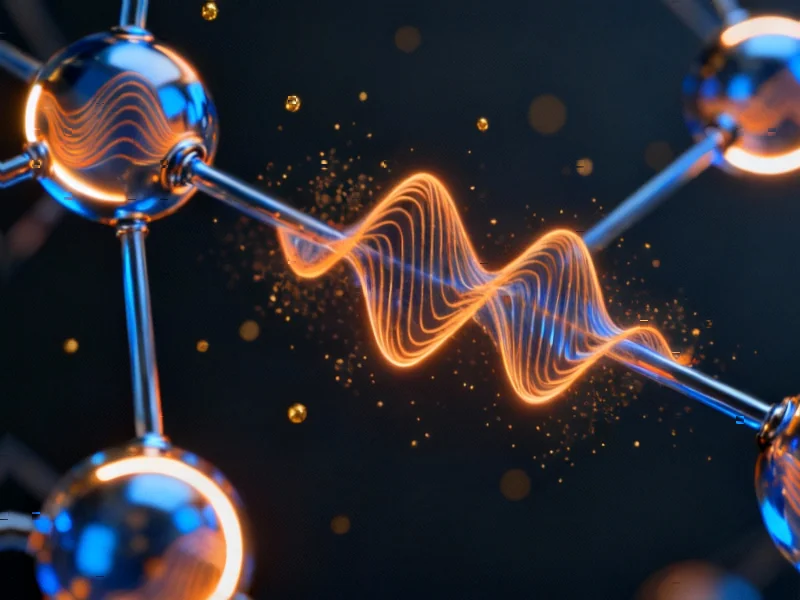Revolutionizing Multi-Phase Flow Analysis with Hybrid Machine Learning
In cutting-edge fluid dynamics research, scientists are pioneering innovative approaches to understand complex multi-phase wavy flows influenced by electroosmotic effects and heat transfer. A groundbreaking study published in Scientific Reports demonstrates how artificial intelligence is transforming our ability to model these intricate physical phenomena that play crucial roles in chemical processing, mechanical systems, nuclear engineering, and biological applications.
Table of Contents
- Revolutionizing Multi-Phase Flow Analysis with Hybrid Machine Learning
- The Computational Breakthrough: Morlet Wavelet Tanh Neural Networks
- Validation Through Physics-Informed Neural Networks
- Key Physical Insights and Applications
- The Evolution of Multi-Phase Flow Modeling
- Broader Implications for Scientific Computing
- Future Directions and Potential Applications
The Computational Breakthrough: Morlet Wavelet Tanh Neural Networks
At the heart of this advancement lies a novel hybrid approach combining artificial neural networks (ANNs) with heuristic optimization algorithms. Researchers have developed Morlet Wavelet Tanh Neural Networks (MTNNs), which utilize a unique combination of Morlet wavelet and hyperbolic tangent functions as activation functions. This sophisticated architecture enables the neural networks to effectively capture the nonlinear behavior inherent in multi-phase flow dynamics., according to recent innovations
The innovation extends beyond network architecture to the optimization process. The MTNNs employ particle swarm optimization (PSO) as a global searching technique to fine-tune weights and biases, creating an exceptionally robust fitness function for solution estimation. This represents a significant departure from traditional numerical methods that often struggle with the complexity of electroosmotic flow equations.
Validation Through Physics-Informed Neural Networks
To ensure accuracy, the research team implemented a comprehensive validation strategy using Python-based Physics Informed Neural Networks (PINNs) with Adam optimizer. This dual-approach methodology provides strong verification of results, with the proposed MTNNs demonstrating remarkable alignment with PINN-generated solutions.
Statistical analysis further confirmed the reliability of the approach through histogram visualizations, probability plots, and boxplots. Critical error metrics including cost function, absolute error, and mean squared error (MSE) were thoroughly evaluated, with MSE values for velocity and temperature falling within highly acceptable ranges for engineering applications.
Key Physical Insights and Applications
The research reveals crucial relationships between electromagnetic forces and flow characteristics. Graphical analysis demonstrates that flow velocity and thermal distributions are directly influenced by electroosmotic factors but inversely affected by applied magnetic fields. These findings have profound implications for numerous industrial and scientific applications:
- Microfluidic systems where precise control of fluid movement is essential
- Chemical processing equipment requiring optimized heat transfer
- Biomedical devices leveraging electroosmotic phenomena
- Energy systems involving complex multi-phase flows
The Evolution of Multi-Phase Flow Modeling
This research builds upon decades of development in fluid dynamics modeling. The concept of nanofluids, originally proposed by Choi et al., has evolved significantly through contributions from numerous researchers. Earlier approaches by Goswami et al. examined electro-osmotic forces in microchannels, while Kumar et al. explored radiative heat transfer effects in magnetic fields., as comprehensive coverage
The current MTNN approach represents a paradigm shift from traditional methods like the homotopy analysis method used by Sohail et al. for entropy generation studies or the Adomian decomposition scheme employed by Mallick et al. for electrokinetic flow analysis. By leveraging artificial intelligence, researchers can now tackle problems that were previously computationally prohibitive.
Broader Implications for Scientific Computing
The success of MTNNs in analyzing electroosmotic effects signals a broader transformation in how scientists approach complex differential equations. As demonstrated by Raissi et al.’s work on physics-informed neural networks and Guasti et al.’s exploration of deep feedforward networks, AI-powered methods are becoming increasingly central to scientific computing.
This research not only provides specific insights into multi-phase wavy flows but also establishes a framework for applying hybrid machine learning approaches to other challenging problems in fluid dynamics and beyond. The integration of wavelet functions with neural networks opens new possibilities for capturing multi-scale phenomena across various scientific domains.
Future Directions and Potential Applications
The demonstrated success of MTNNs suggests numerous potential applications across engineering and science. The approach could be adapted for real-time control systems in industrial processes, enhanced predictive modeling for environmental flows, or improved design of medical devices utilizing electrokinetic phenomena.
As computational power continues to grow and machine learning algorithms become more sophisticated, we can anticipate further breakthroughs in our ability to model and understand complex physical systems. The marriage of physics-based modeling with data-driven approaches represents the future of scientific computing, with this research serving as a compelling example of its potential.
The integration of wavelet theory, neural networks, and evolutionary optimization marks a significant milestone in computational fluid dynamics, offering researchers powerful new tools to unravel the complexities of multi-phase flows under electromagnetic influences. As these methods mature, they promise to accelerate innovation across numerous technological domains where precise control of fluid behavior is critical.
Related Articles You May Find Interesting
- Beyond Pandemic Protection: How COVID mRNA Vaccines Could Revolutionize Cancer I
- Quantum Gravity’s ‘Smoking Gun’ Test Challenged by New Research
- AI Now Designs Its Own Learning Systems, Outpacing Human-Created Algorithms
- Lunar Far Side Samples Reveal Unexpected Meteorite Fragments in Scientific Break
- Machine Learning Revolutionizes Sustainable Concrete Development with Self-Heali
This article aggregates information from publicly available sources. All trademarks and copyrights belong to their respective owners.
Note: Featured image is for illustrative purposes only and does not represent any specific product, service, or entity mentioned in this article.



